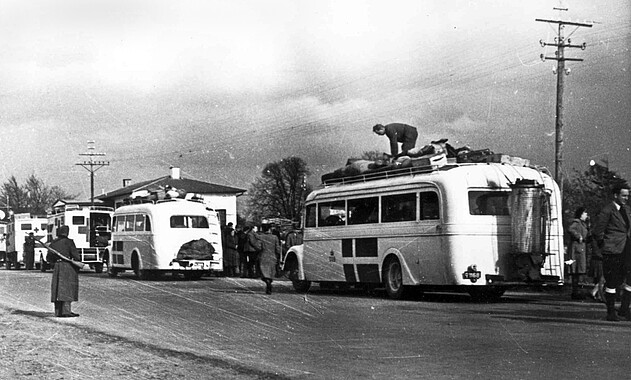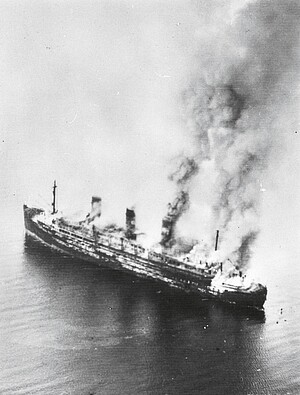
The White Buses Campaign
In March 1945, all Danish and Norwegian prisoners in Germany were collected in Neuengamme concentration camp. This was a concession from Heinrich Himmler, the Reich Leader (Reichsführer) of the SS, to the vice-president of the Swedish Red Cross, Count Folke Bernadotte. More than 4,000 prisoners were sent to Sweden and thus liberated on 20 April 1945 on the so-called White Buses.
Death Marches
At the same time, the evacuation of the main camp also began. The prisoners were sent on so-called death marches. Thousands of prisoners from Neuengamme concentration camp were ordered to travel by foot or on freight trains with terrible conditions to collection camps like Wöbbelin (5,000 prisoners), Sandbostel (9,000 prisoners) and Bergen-Belsen (8,000 prisoners), where they were left to die. Prisoners were deposited in these camps without food or medical care and were left to their own devices under catastrophic sanitary conditions. During this time, the SS destroyed all traces of their crimes at Neuengamme.
Cap Arcona
When the collection camps became overcrowded, the Nazi party district leader (Gauleiter) in Hamburg, Karl Kaufmann, seized three ships, including the Cap Arcona, and loaded more than 9,000 prisoners onto them. Crammed in the ships’ holds, many died of hunger, thirst and disease. During a British air raid on 3 May 1945, meant to prevent German troops from retreating across the Baltic Sea, the ships Cap Arcona and Thielbek were hit and caught fire. 6,600 prisoners died in the fire, drowned or were shot while trying to reach safety. Only around 450 people survived.
“And then the people came. We knew there were concentration camps in Germany. I believe almost everyone knew that. We also knew that they weren’t holiday resorts. But what we didn’t know was how these people looked. That was a shock for us. […] There were people that were only skin and bones.”
Walter Felgner, Second Officer of the Thielbek. (Interview, 21 January 1983, ANg)

